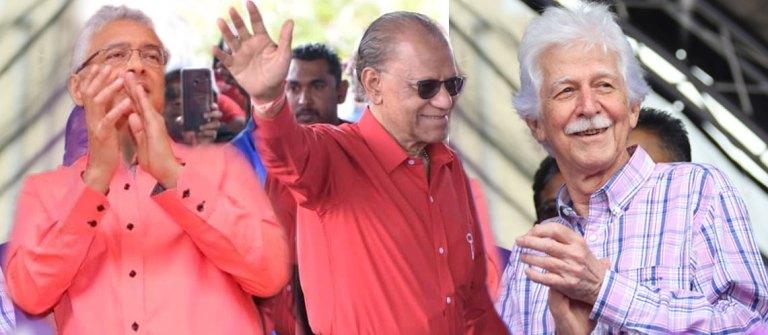Africa-Press – Mauritius. Tomorrow, November 7: 911,320 voters are called to slip their ballot into the ballot box to designate the 60 Mauritian deputies who will sit with the two elected Rodriguans and the Best Losers in the national parliament.
That is 4,130 more registered than in the last elections of 2014 or an increase of 0.45%. The number of applicants stands at a record 817, including 148 applicants.
83 candidates will seek the votes in the single constituency of Pamplemousses / Triolet (No. 5).
This constituency has the largest number of voters, 65,115, exceeding those of Savanne / Rivière Noire (No. 14) and La Caverne / Phoenix ( No. 15) in which 63,500 and 57,256 voters are registered respectively.
Three large ’formations are in direct competition for the leadership of the country, including two alliances – the Morisian Alliance led by the MSM, and the National Alliance led by the Labor Party – and the MMM.
The “small” parties usually present at this meeting are there, with the exception of Rezistans ek Alternativ whose candidacies were rejected for not declaring their ethnicity. The party led by Jack Bizlall is absent for this general election.
These legislative elections will take place for the first time since 1976 in a three-way fight, which observers consider incompatible with our majority electoral system – First Past The Post (FPTP).
Indeed, since 1976, the nine general elections have taken place in a context of bipolar confrontation. Retrospective
The formula of a three-way struggle within the framework of the FPTP system accentuates the crumbling of voices and does not allow a clear outcome.
In 1976, three major groups disputed during the legislative elections. The MMM finds itself in first place with 39% of the votes cast and 33 elected including the Best Losers.
The Labor Party (PTr) is second with 38% of the vote and 28 seats. The PTr forms the Government by allying with the PMSD which won 16% of the vote and 8 seats.
The last legislative elections of 2014 were marked by a bipolar battle between the Alliance Lepep and the Alliance PTr-MMM. The Lepep Alliance, made up of MSM, Muvman Liberater (born out of MMM dissent) and PMSD, won 83% of the votes cast and 51 seats including 4 Best Losers.
The Alliance de l’Avenir (PTr and MMM) won 51% of the vote and 16 seats in total. (The MMM and the PTr, whose combined electoral strength stood at 80% in 2010, has weakened considerably.
)
In addition, these 2014 elections were characterized by a record abstention rate of 26% and a large number of floating voters.
Since 2014, the political landscape has been recomposed with the withdrawal of the PMSD from the government majority and its rallying to the National Alliance led by the PTr.
Meanwhile, the PTr won the partial at Belle-Rose / Quatre-Bornes (No.18) in December 2017. This same National Alliance faces the Morisian Alliance made up of the MSM, the ML and a few MMM dissidents.
Also present on the scene is the MMM: we have seen a comeback of this party in recent days. By contending for the votes alone, the MMM is counting on the “split vote” between the AN and the AM who fish largely in the same waters.
Be careful with forecasting the distribution of seats
In 2005 and 2010, O. R. A. C. had drawn up an analysis report on the legislative elections published by the Mauritius Times.
These studies included election forecasts that had turned out to be correct, within a few seats. In 2005, we had planned 40 seats in the Social Alliance against 20 in the MMM-MSM Alliance.
Result: 38 seats and 22 respectively. In 2010, our projection gave 41 seats to the PTr-MSM-PMSD Alliance against 19 to the MMM-MSM Alliance. The result: 42 seats in the First Alliance and 18 in the MMM-MSM Alliance.
In 2014, we had not submitted any analysis report, having been unable to define the political spectrum. As highlighted in our edition of last week, with regard to the crucial 2019 election, caution should be exercised in forecasting the number of seats that a particular party would ultimately win.
In our parliamentary system, it is the number of seats won by a particular party or alliance that is decisive. And this is happening at the constituency level.
In addition to the uncertainty inherent in this three-way struggle, the mix of votes and abstention remain key factors influencing the allocation of seats. The late crystallization of the choice of a large number of indecisive or floating also makes such an exercise perilous.







